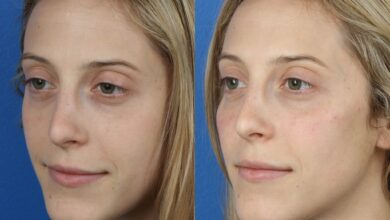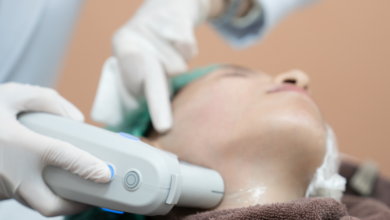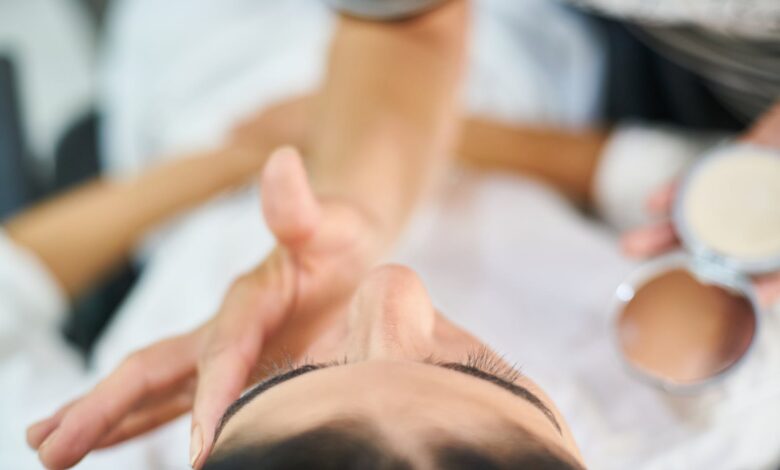
Got skin troubles that have you searching for solutions? Let’s dive into what the market has to offer. We’re talking about the latest in laser resurfacing treatments—no fluff, just the facts on how these high-tech therapies can target your skin woes. From reducing the appearance of fine lines and scars to evening out your skin tone, there’s a range of options to explore. And don’t worry, there’s no one-size-fits-all here; it’s all about finding what suits your skin’s unique story. So, let’s get into the nitty-gritty of what’s out there and how these treatments can help you wave goodbye to those imperfections and welcome in the smooth, radiant skin you’re aiming for
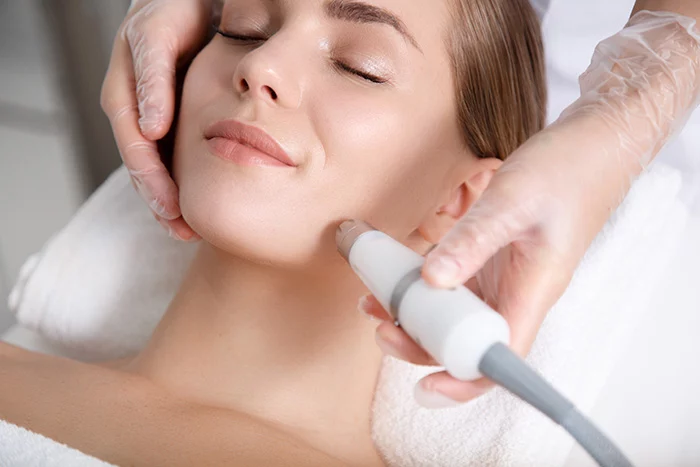
What is laser resurfacing?
Definition
Laser resurfacing is a cosmetic procedure that uses laser technology to improve the appearance of the skin. It is a non-surgical treatment that works by removing the outer layer of damaged skin to reveal a smoother, more youthful complexion. By targeting specific skin concerns such as wrinkles, scars, and uneven pigmentation, laser resurfacing can help rejuvenate and revitalize the skin.
Purpose
The purpose of laser resurfacing is to address various skin imperfections and signs of aging. Whether caused by sun damage, acne scars, or the natural aging process, these concerns can affect one’s self-confidence and overall satisfaction with their appearance. Laser resurfacing aims to minimize the appearance of wrinkles, fine lines, acne scars, age spots, and other skin irregularities, resulting in a more even and youthful complexion.
Benefits
Laser resurfacing offers numerous benefits for individuals seeking to improve the appearance of their skin. Some of these benefits include:
- Improved skin texture: Laser resurfacing can help smooth out rough and uneven skin texture, minimizing the appearance of fine lines, wrinkles, and acne scars.
- Reduces hyperpigmentation: Laser treatments target excess melanin in the skin, reducing the appearance of dark spots and patches caused by sun damage or hormonal changes.
- Stimulates collagen production: The heat from the laser stimulates the production of collagen, a key protein that gives the skin its structure and elasticity. This helps to improve skin firmness and reduce the signs of aging.
- Customizable treatment: Laser resurfacing can be tailored to each individual’s specific skin concerns and desired outcomes. Treatment plans can be customized based on the severity of skin issues and personal goals.
- Minimal downtime: Depending on the type of laser used and the extent of the treatment, downtime can vary. However, compared to invasive surgical procedures, laser resurfacing generally requires less downtime and recovery time.
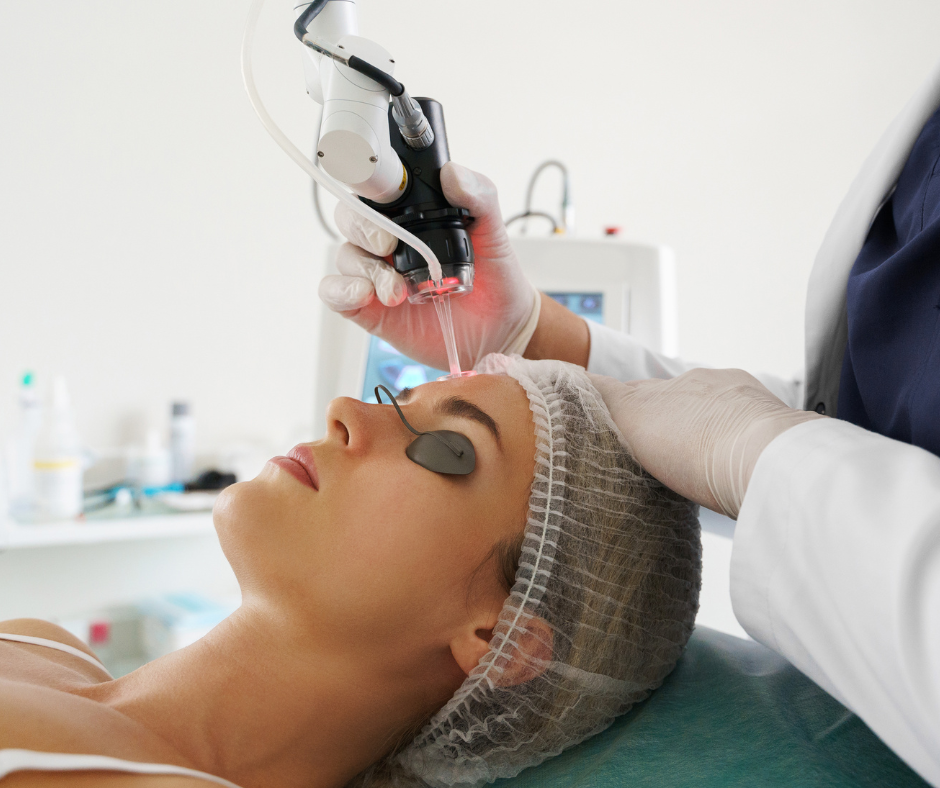
Different types of laser resurfacing
Fractional laser resurfacing
Fractional laser resurfacing is a popular technique that treats only a fraction of the skin’s surface, leaving surrounding tissue intact. This highly precise method creates tiny “microthermal” zones in the skin, stimulating the production of new collagen and elastin. Fractional laser resurfacing can effectively improve fine lines, wrinkles, acne scars, and uneven pigmentation, with minimal downtime.
CO2 laser resurfacing
CO2 laser resurfacing is a more intensive laser treatment that uses carbon dioxide lasers to remove thin layers of damaged skin. This procedure is particularly effective in treating deeper wrinkles, scars, and sun-damaged skin. CO2 laser resurfacing stimulates collagen production and results in significant skin tightening, but it may require a longer recovery period compared to fractional laser resurfacing.
Erbium laser resurfacing
Erbium laser resurfacing is a versatile laser treatment that can be adjusted to target different skin concerns. It works by removing the outermost layers of the skin while minimizing damage to the surrounding tissue. Erbium laser resurfacing is often chosen for more superficial skin issues such as fine lines, age spots, and mild acne scars. This treatment typically offers a shorter recovery time compared to CO2 laser resurfacing.
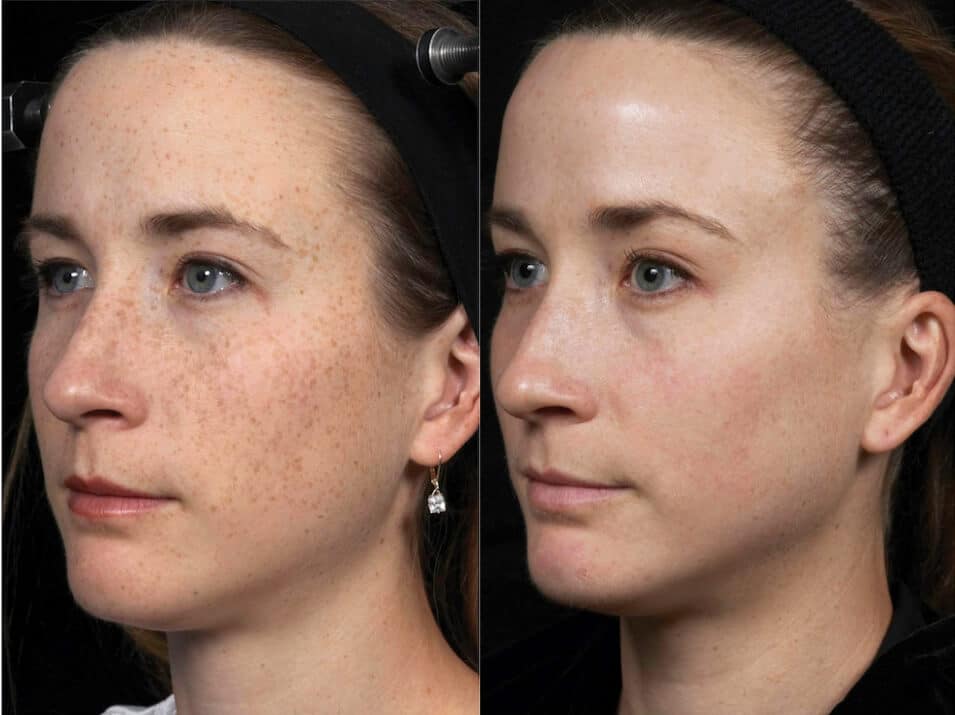
Determining candidacy for laser resurfacing
Skin type and condition
Determining the suitability of an individual for laser resurfacing starts with evaluating their skin type and condition. While laser resurfacing can benefit many individuals, it may not be suitable for everyone. People with darker skin tones, for example, may be more prone to pigmentation changes and scarring after laser treatment. A thorough assessment of one’s skin type, including color, texture, and sensitivity, is essential to ensure safe and effective treatment.
Medical history
A comprehensive review of an individual’s medical history is crucial in determining their candidacy for laser resurfacing. Certain medical conditions and medications may influence the decision to proceed with this procedure. It is important to disclose any medical conditions, allergies, or medications to the treating specialist to minimize potential risks and complications.
Expectations
Managing expectations is an essential aspect of determining candidacy for laser resurfacing. It is important for individuals to have realistic expectations about the potential outcomes of the procedure and understand that multiple treatments may be necessary to achieve their desired results. Open communication with a specialist during the consultation process helps ensure that the individual’s expectations align with what laser resurfacing can realistically deliver.
Customized treatment plans
Consultation with a specialist
Before undergoing laser resurfacing, an initial consultation with a qualified specialist is essential. This consultation serves as an opportunity for the specialist to evaluate the individual’s skin and discuss their goals and concerns. During this appointment, the specialist will explain the different laser resurfacing options available and determine the most appropriate treatment plan for the individual.
Discussion of goals and concerns
During the consultation, it is important for the individual to openly discuss their goals and concerns with the specialist. Whether the aim is to reduce wrinkles, minimize acne scars, or improve overall skin texture, the specialist will listen attentively and address each concern. This discussion enables the specialist to tailor the treatment plan to meet the individual’s specific needs and desired outcomes.
Tailored treatment approach
Based on the assessment and the individual’s goals, the specialist will develop a customized treatment approach. This includes determining the most suitable type of laser resurfacing, the number of sessions required, and any additional treatments that may enhance results. The specialist will explain the treatment plan thoroughly, ensuring that the individual understands the intended outcomes, timeline, and any potential risks or side effects.
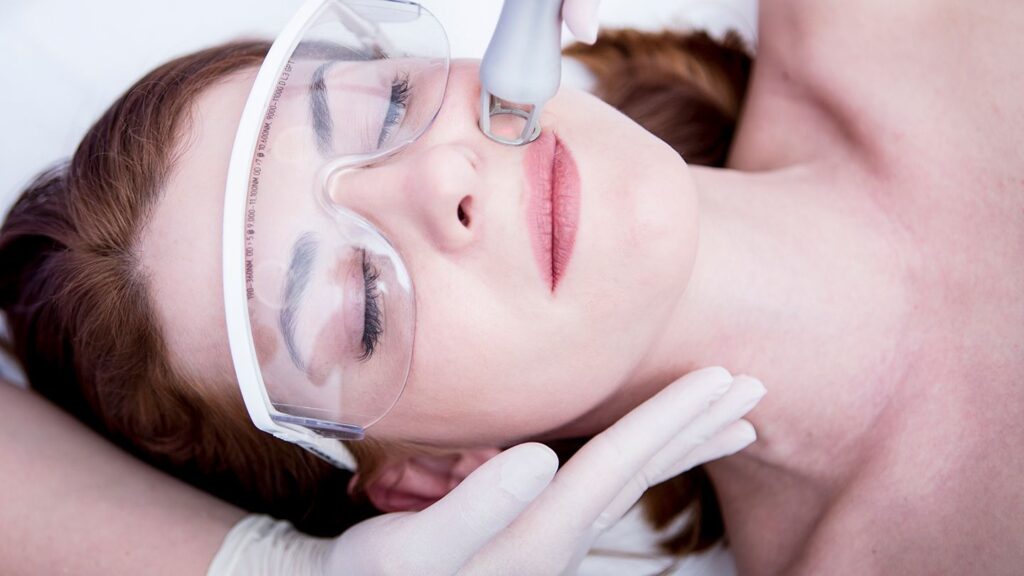
Preparing for laser resurfacing
Skin evaluation
Before the laser resurfacing procedure, a comprehensive evaluation of the individual’s skin is essential. The specialist will examine the skin’s condition, assess any underlying issues, and determine the appropriate treatment parameters. This evaluation helps to ensure that the individual is adequately prepared for the procedure and that their skin is in the optimal state for successful treatment.
Pre-treatment instructions
In preparation for laser resurfacing, the individual will receive specific pre-treatment instructions from the specialist. These instructions may include avoiding sun exposure, discontinuing the use of certain skincare products, and refraining from hair removal methods that may irritate the skin. Adhering to these instructions is vital to minimize potential complications and ensure the best possible results.
Avoiding certain medications
Certain medications and supplements can increase the risk of complications during laser resurfacing. The specialist will provide a list of medications that should be avoided before the procedure, such as blood-thinning medications and oral acne medications. It is crucial for individuals to disclose all medications they are taking and carefully follow the specialist’s instructions to reduce any potential risks.
The laser resurfacing procedure
Application of numbing cream
To ensure the individual’s comfort during the laser resurfacing procedure, a numbing cream is applied to the treatment area. This cream helps to minimize any potential discomfort or pain associated with the laser treatment. The specialist will explain the sensations that may be experienced during the procedure, which can range from warmth to a mild stinging sensation.
Protection of eyes and hair
Protecting the eyes and hair during laser resurfacing is fundamental. The specialist will provide protective eyewear to shield the eyes from the laser’s bright light and any potential debris. Hair will also be protected using a cap or headband, ensuring that it does not interfere with the treatment or absorb any laser energy.
Energy delivery to skin
Once the preparation is complete, the laser resurfacing treatment will begin. The specialist will use the chosen laser device to deliver specific wavelengths of light to the skin. The energy from the laser is absorbed by the targeted skin cells, causing them to heat up and vaporize. This process stimulates collagen production and triggers the body’s natural healing response, leading to healthier and rejuvenated skin.

Aftercare and recovery
Post-treatment instructions
After laser resurfacing, the specialist will provide detailed post-treatment instructions to ensure proper healing and optimal results. These instructions may involve applying prescribed creams, avoiding direct sunlight, and maintaining a gentle skincare routine. It is crucial for individuals to follow these instructions diligently to minimize the risk of complications and promote a smooth recovery.
Managing discomfort
Some discomfort or mild pain may be experienced following laser resurfacing, but this can be managed with over-the-counter pain relievers or prescribed medications as recommended by the specialist. Cold compresses can also help alleviate any temporary swelling or redness. It is essential to communicate any significant discomfort or unexpected side effects to the specialist promptly.
Expected downtime
The duration of downtime following laser resurfacing can vary depending on the type and extent of the treatment. Generally, individuals can expect redness, swelling, and mild skin peeling in the treated area for several days to a few weeks. It is important to plan accordingly and avoid any activities or commitments that may hinder the healing process.
Results and potential risks
Expected outcomes
The expected outcomes of laser resurfacing include smoother, more even-toned skin with diminished wrinkles, scars, and discoloration. However, it is crucial to understand that every individual’s response to treatment may vary. Multiple sessions may be required to achieve optimal results, and the final outcomes will become more noticeable as the skin continues to heal and regenerate.
Possible side effects
While laser resurfacing is generally considered safe, there are possible side effects that individuals should be aware of. These can include temporary redness, swelling, itching, or a sunburn-like sensation. In rare cases, there may be prolonged redness or hyperpigmentation, which can usually be managed with appropriate post-treatment care. Severe complications, such as infection or scarring, are rare but can occur.
Long-term effects
The long-term effects of laser resurfacing mainly depend on how well the individual maintains their skin health following the procedure. By adopting a proper skincare routine, wearing sunscreen daily, and avoiding excessive sun exposure, the longevity of the results can be extended. Regular maintenance treatments may also be recommended to sustain the skin’s improved appearance and address any new concerns that may arise over time.
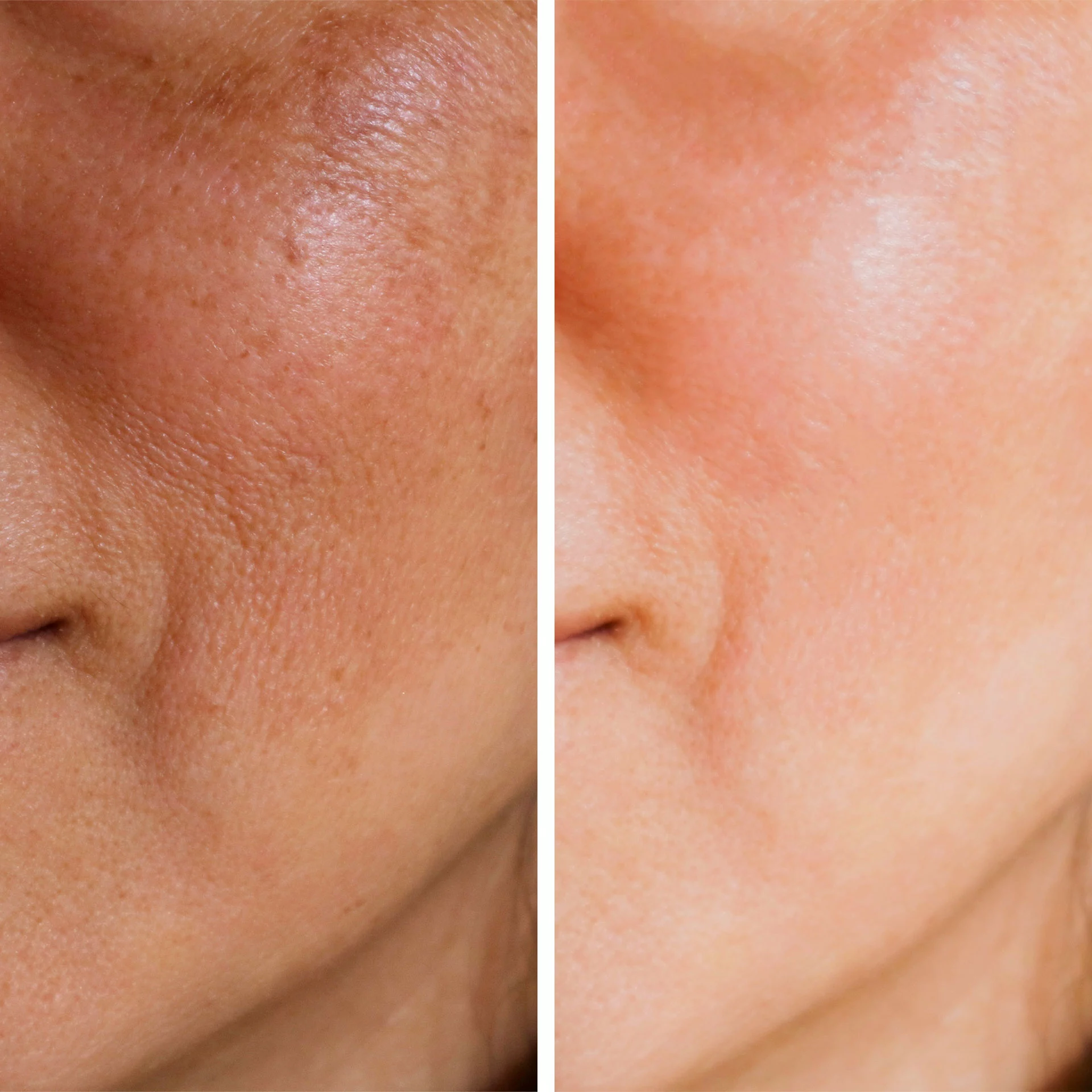
Combination treatments
Enhancing results with other procedures
Combining laser resurfacing with other cosmetic procedures can enhance the overall results and address multiple skin concerns simultaneously. For instance, individuals seeking to reduce fine lines and improve skin volume may choose to combine laser resurfacing with dermal fillers or injectables. A comprehensive evaluation by a specialist will determine if combination treatments are suitable and provide the best possible outcomes.
Recommended interval between treatments
The recommended interval between laser resurfacing treatments can vary depending on the individual’s specific needs and treatment plan. In general, multiple treatments are typically spaced several weeks apart to allow for proper healing and collagen remodeling. The specialist will discuss the optimal treatment interval during the consultation and adjust it as needed throughout the course of treatment.
Combining laser resurfacing with injectables
Laser resurfacing can be effectively combined with injectables, such as Botox or dermal fillers, to target different aspects of skin aging. While laser resurfacing improves the overall texture and quality of the skin, injectables can address dynamic wrinkles, fine lines, and loss of volume. The combination of these treatments can provide a comprehensive rejuvenation effect, resulting in a more youthful and refreshed appearance.
Cost and considerations
Determining factors
The cost of laser resurfacing can vary depending on several factors. These factors include the type of laser used, the size of the treatment area, the severity of the skin concerns being addressed, and the geographic location of the treatment facility. Additionally, the expertise and reputation of the specialist performing the procedure may also influence the cost. It is important to obtain a comprehensive quote during the initial consultation and consider all associated costs, such as post-treatment care and follow-up visits.
Financial planning
Given that laser resurfacing is typically considered a cosmetic procedure, it is often not covered by insurance. As a result, individuals should carefully consider their financial situation and plan accordingly. Many clinics offer financing options and payment plans to make treatments more accessible. It is essential to discuss any financial concerns with the specialist or treatment provider to explore available options and make an informed decision.
Insurance coverage
In some cases, laser resurfacing may be partially covered by insurance if it serves a medical purpose rather than purely cosmetic. For example, if the procedure is performed to address precancerous skin lesions or other medically necessary conditions, some insurance plans may provide coverage. However, coverage policies vary, and it is important to check with the insurance provider to determine if they offer any coverage for laser resurfacing procedures.
Personalized Glow: Laser Resurfacing Just For You On Stylish.ae(Opens in a new browser tab)
Cerave Resurfacing Retinol Serum Review(Opens in a new browser tab)
The Delicate Balance: Caring For Sensitive Skin Post-Treatment(Opens in a new browser tab)


